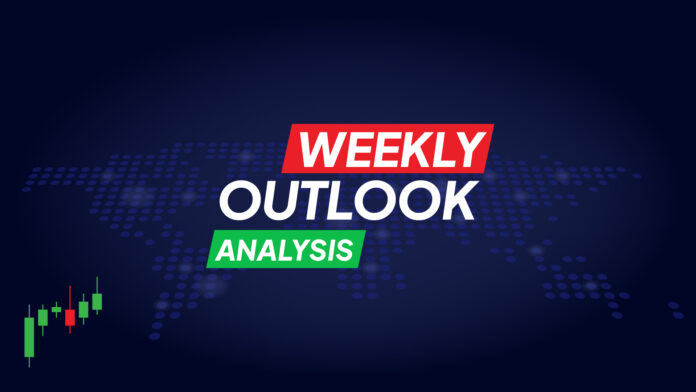Key points to watch out for:
- ECB expected to ease monetary policy again, but will it be “hawkish tapering” again?
- U.S. CPI to be the last inflation update ahead of September FOMC
- U.K. starts releasing monthly employment and GDP data
European Central Bank to Cut Rates for a Second Time
The European Central Bank’s carefully choreographed cycle of rate cuts got off to an awkward start in June following late-breaking data. Seeking credibility, policymakers had no choice but to proceed with the 25 basis point rate cut, even though it was a hawkish move. Fortunately for businesses struggling in Europe, the case for further monetary easing has strengthened since the last meeting in July, when rates were kept unchanged. Headline inflation fell to 2.2% year-on-year in August, and the recovery in eurozone growth has been relatively sluggish.
The current economic situation may allow for downward revisions to the ECB’s quarterly inflation and GDP estimates, set to be released on the meeting day, Thursday, August 12. Meanwhile, ECB President Christine Lagarde is likely to reduce the emphasis on a data-dependent, meeting-by-meeting approach. She may confidently signal that further rate cuts are forthcoming. However, there is a downside: the rebound in the services CPI in August, reaching its highest level since October 2023, at 4.2% year-on-year. While this may not be enough to change the bank’s stance in September, Lagarde will likely remain somewhat cautious at the press conference.
If Lagarde signals a less aggressive rate cut path than investors expect, the euro could resume its upward trend after weakening against a stronger US dollar.
Will US CPI Support the Case for a 50 Basis Point Cut?
The dollar has recently faced turbulence amid uncertainty over whether the Federal Reserve will lower rates by 25 or 50 basis points at its next meeting. The Fed’s long-awaited policy shift was announced in August at the annual central bankers’ symposium in Jackson Hole. Chairman Powell acknowledged emerging cracks in the labor market, thereby opening the door for a potential 50 basis point move in September. So far, comments have not supported the need for aggressive action, as the data has largely remained solid. The key question is to what extent the Fed will prioritize its employment mandate over price stability, given the ongoing risks of rising inflation.
The ISM’s price-paid indicators for manufacturing and services sectors rose in August, even as employment contracted in manufacturing and barely grew in services. The CPI report on Wednesday, August 11, will be the final piece of the puzzle ahead of the September decision, providing some clarity on what to expect. Overall CPI declined to 2.9% year-on-year in July and is expected to drop to 2.6% in August. However, the core index is anticipated to remain steady at 3.2%. If these figures are confirmed, the Federal Reserve will likely apply a moderate cut of around 25 basis points. A significant downside surprise would be required for a 50 basis point cut to become a real possibility.
Investors have priced in a roughly 40% chance of a 50 basis point cut, leaving little room for disappointment. The dollar could rise if the CPI data matches or exceeds estimates. Producer prices will be released on Thursday, August 12. The University of Michigan’s preliminary September consumer confidence survey, especially the one- and five-year inflation estimates, will also be significant on Friday, August 13.
The Pound Awaits British Data and the Bank of England’s Decision
The Bank of England is expected to keep interest rates unchanged at its meeting on September 19. The UK economy recovered strongly in the first half of the year. With wage growth and services inflation still high, the Bank of England can afford a pause after its first rate cut of the August cycle. However, the decision could be tighter than expected, depending on the data released before the September meeting.
On Tuesday, August 10, the July employment report will be released, offering further insight into whether the UK labor market is stabilizing after significant job losses earlier this year. The unemployment rate fell by 0.2 percentage points to 4.2% in June. However, another significant drop may not be welcomed if wage growth becomes a concern for maintaining 2.0% inflation. An increase in wage contraction could heighten wage pressures, complicating the Bank of England’s fight against inflation. On Wednesday, August 11, the focus will shift to July GDP data, detailing the performance of the services and manufacturing sectors.
There is currently a 75% chance of no change in September. However, sterling could face significant pressure if this week’s releases disappoint, raising the chance of a 25 basis point cut to around 50%.
Focus Turns to Asia at the Start of the Week
Amid ongoing concerns about China’s economic slowdown, CPI and PPI figures on Monday, August 9, followed by August trade figures on Tuesday, August 10, could impact risk-sensitive currencies like the Australian dollar. The last few months have seen a considerable rebound in exports, which may highlight short-term risk appetite in August, though it may not alleviate the general pessimism surrounding China’s economic outlook.
In Japan, the week will be data-heavy, focusing on the GDP revision on Monday, August 9. Second-quarter GDP growth is expected to be revised up from the initial estimate of 0.8% year-on-year. A higher-than-expected figure could raise estimates for another rate hike by the Bank of Japan in 2024, potentially bolstering the latest yen rally.



